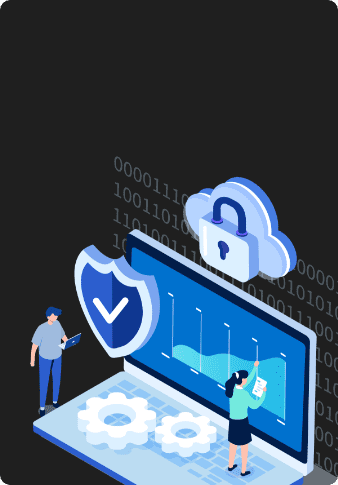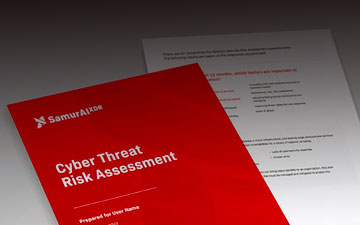XDR Articles
Extended Detection and Response (XDR) is an approach to cybersecurity that combines multiple security tools and data sources to provide a more comprehensive view of threats. This can help organizations detect and respond to threats more quickly and efficiently, reducing the risk of data breaches and other cyberattacks. This blog category will provide you with information about XDR, including its benefits, how it works, the different XDR solutions available, XDR best practices, and how to implement XDR in your organization.
How Samurai XDR’s Threat Intelligence Protects Your Business
Attacks on IT environments are becoming increasingly sophisticated and harder to detect using traditional methodology. It is no longer enough to rely on stopping threats by monitoring an IT environment. Proactive measures need to be taken.
October 4, 2023 | XDR
How XDR Reduces Your Cybersecurity Workload
The security of a company’s IT environment is critical for its ability to effectively perform business operations. Mishandling sensitive information may lead to data breaches that expose the personal details of clients and reduced consumer confidence.
September 28, 2023 | XDR
How XDR Simplifies Implementing Robust Cybersecurity
Implementing robust cybersecurity is a complex undertaking. The individuals responsible for securing an IT environment must have the knowledge and tools to guard against increasingly sophisticated threat actors.
September 20, 2023 | XDR
How XDR Helps SMBs Provide Cost-Effective Cybersecurity
Businesses of all sizes need to protect their IT environments from the dangers posed by hackers and threat actors. In today’s threat landscape, all companies need to address the dangers posed to the survival of their businesses by cyberattacks.
September 13, 2023 | XDR
How Samurai XDR Boosts Security by Efficiently Detecting Threats
The threat landscape affecting an organization’s IT environment is constantly changing. Threat actors working alone or in organized groups are continuously looking for new methods with which to compromise business-critical systems and valuable data resources.
September 8, 2023 | XDR
XDR: Simplifying Security Through Visual Learning - Our New Infographic
We are thrilled to share our newly designed infographic 'Demystifying XDR: A Visual Guide.' In our latest blog post, we will walk you through what the infographic covers and why it's a must-see for anyone interested in cybersecurity.
July 24, 2023 | Cybersecurity 101, XDR
The Importance of Comprehensive Telemetry for an XDR Platform
The effectiveness of XDR solutions depends on the breadth and quality of the telemetry made available to the platform. The complexity of modern IT environments requires the broad collection of diverse telemetry from all areas of the infrastructure.
June 30, 2023 | XDR
How XDR Helps Defend Your Business From SEO Poisoning
SEO poisoning is a method that threat actors employ in an attempt to entice users into visiting malicious websites. In this blog post, we will take a close look at SEO poisoning and discuss methods that can be used to detect and prevent this malicious activity.
June 29, 2023 | XDR, Cybersecurity 101
Why You need XDR Despite Effective Security Controls
XDR is an approach to threat detection that represents the evolution and consolidation of NDR and EDR solutions. By taking a more holistic view of a computing environment, XDR goes beyond the threat detection capabilities of NDR and EDR.
April 3, 2023 | XDR
Featured articles
How Samurai XDR’s Threat Intelligence Protects Your Business
4 October 2023 | XDR
Attacks on IT environments are becoming increasingly sophisticated and harder to detect using traditional methodology. It is no longer enough...
How XDR Reduces Your Cybersecurity Workload
28 September 2023 | XDR
The security of a company’s IT environment is critical for its ability to effectively perform business operations. Mishandling sensitive information...
How XDR Simplifies Implementing Robust Cybersecurity
20 September 2023 | XDR
Implementing robust cybersecurity is a complex undertaking. The individuals responsible for securing an IT environment must have the knowledge and...


